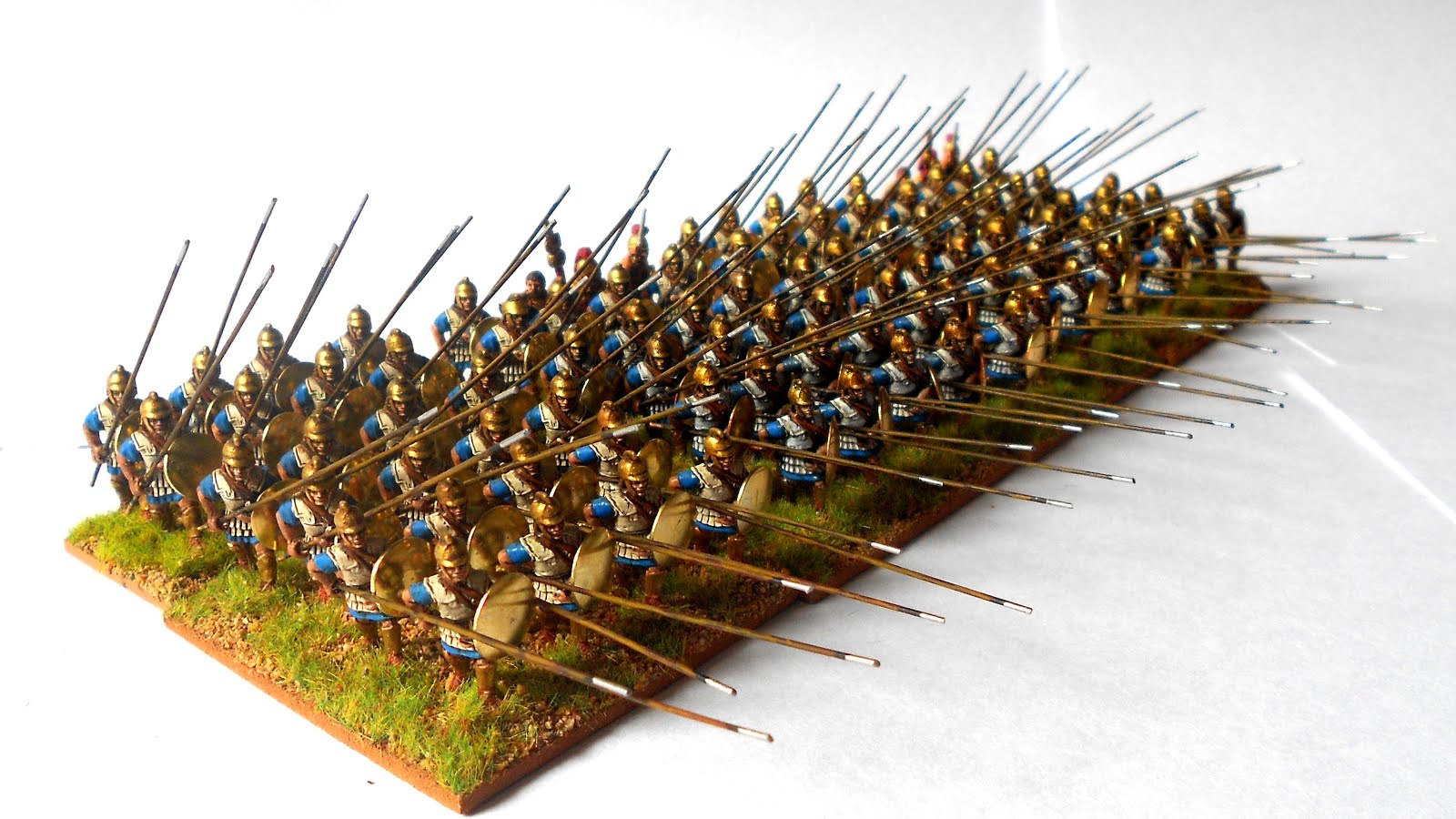Hi Sansovino, thanks for asking! I am guessing they did not have shields as I have depicted but there might have been a slim chance it was possible. My main inspiration is mainly from illustrations from Ancient Warfare magazines, Osprey books and my pics around online including photographed miniatures. Also I have added a few of the books and articles below. But mostly I just go with whats easiest or how much patience I have at the time for painting and modelling.

From my reading I get the impression that "Macedonian" shields if they were bronze faced (sometimes leather) would likely be embossed with patterns or sometimes a monogram of the king's initials or maybe a symbol of their dynasty (the Seleucids may have used a ships anchor as a shield device). The Seleucid king Antiochus IV held a military parade at Daphne in roughly 166BC, there was a unit referred to as the "Bronze Shields" which it is believed until that point had only been used as a Antigonid regimental title. It may have been refounded by Antiochus after the battle of Pydna to attract Macedonian soldiers or keep the title alive?
I have found that studying the Hellenistic era fascinating but also frustrating quite often the more you read the more questions are raised rather than answered. It started for me when I was trying to find out what a "Thureophoroi" was about 10 years ago, and I just fell deeper into the era with no escape in sight

For ease and convenience I just kept the shields plain. Also the size and shape roughly matches that of HaTs 1/72 Alexandrian Phalangites so hopefully if I paint up some of my HaT minis there may be a bit of continuity with my metal figures that have a different body proportions.
Sorry to ramble on but I hope this helps. Cheers

"Armies of the Macedonian and Punic Wars" Duncan Head
"The Seleucid Army (Seleucid and Ptolemaic Reformed Armies 168-145 BC Volume 1) " Nicholas Sekunda
"The Ptolemaic Army (Selucid and Ptolemaic Reformed Armies 168-145 BC Volume 2) " Nicholas Sekunda
"Macedonian Armies after Alexander 323–168 BC " Nicholas Sekunda
Journal Articles found on Jstor:
"A Shield Monument from Veria and the Chronology of Macedonian Shield Types" Minor M. Markle
http://www.jstor.org/stable/148374"The Macedonian Sarissa, Spear, and Related Armor" Minor M. Markle
http://www.jstor.org/stable/503007









 Moderator
Moderator





